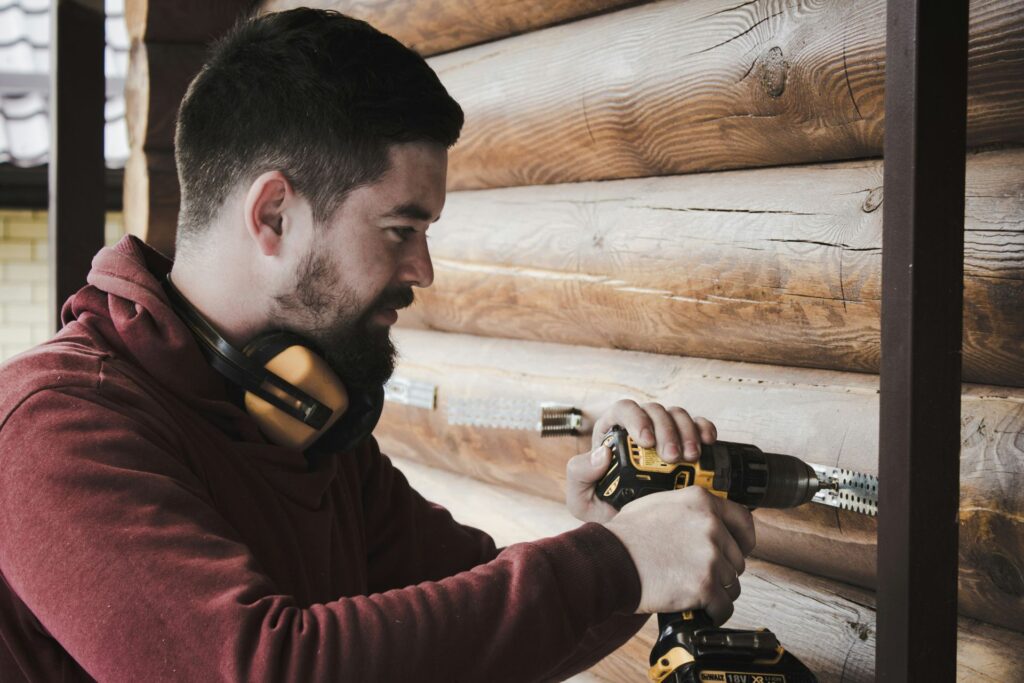
We are reader-supported. When you buy through links on our site, we may earn an affiliate commission.
We’ve been looking for new and exciting building materials since we moved out of caves and started building our own homes and businesses. We’ve come a long way from the hewn stone and rough-cut logs we may have used in yesteryear — but then again, some things never change. Here are some of the most common types of construction materials and their uses.
1. Wood, Engineered Wood, and Bamboo
Wood is one of the oldest building materials known to the human race. As soon as we learned to make stone tools, we would cut down trees and form them into shelters. We still use wood today, though it looks a lot different than the logs we used to use. You’ll find timber in everything from home frames to flooring, roofing, and landscaping.
Engineered wood, on the other hand, is newer, less expensive, and often more sustainable. You’ll find it in many of the same places that you’ll find standard timber, and it can even be more durable than the alternative. Bamboo is one of the newest forms of wood that you’ll find in the construction industry, even though it technically isn’t wood at all. Bamboo grows quickly and is two to three times stronger than traditional hardwood, but it’s classified as a woody grass. Bamboo is becoming increasingly popular with the growing concern about sustainability in construction.
2. Concrete, Brick, and Stone
Concrete, brick, and stone may all seem similar, but they each fill their own distinct niche in the construction industry. Concrete is an aggregate of sand and gravel mixed with cement or some other binder. You’ll find this in foundations, driveways, sidewalks, and other similar projects. As a contractor, you will probably need a concrete pump to use concrete for your projects.
Brick, on the other hand, comes already cast and ready to use. You’ll find bricks in walls, facades, and landscaping. Typically, a skilled bricklayer will assemble them and hold them together with layers of mortar.
Finally, you’ll find stone in various applications, from landscaping and facade work to an integral component of the concrete in your foundation.
3. Glass and Ceramics
With the focus on providing natural light, you can’t build a modern building without glass. It can be fragile, but in the right hands, you can use it in windows, doors, and skylights and for creating visual effects and facades. Old windows typically contain a single sheet of glass, whereas newer options have a double-paned feature to provide better insulation and energy efficiency.
Ceramics may have the same fragility as glass, but they’re an entirely different class of material. Still, you’ll find it in everything from fireplaces and chimneys to sinks, tubs, and other bathroom fixtures. Most tiles used in kitchens and bathrooms come from various forms of ceramics.
4. Steel, Copper and Aluminum
Since the beginning of the Bronze Age, we’ve incorporated metal into our construction projects. Today, you’ll primarily find steel, copper, and aluminum in construction, though you may find other metals like cast iron, silver, and gold as aesthetic additions. You can find steel primarily in structural applications. It’s the framework of everything from small multistory buildings to skyscrapers.
Aluminum is starting to make more appearances in construction because it is comparable in strength to steel but is much lighter than its counterpart. Copper, on the other hand, is an integral part of nearly every building project. Its conductivity makes it the perfect choice for electrical wiring.
5. Carbon Fiber
Carbon fiber is made by infusing long fibers with resins, making them rigid and strong. Inch for inch, carbon fiber is five times as strong as steel at a fraction of the weight. While it’s a popular option for automotive construction, it’s only recently emerging as an option for home and building construction. You won’t find it as on its own unless the architect specifically included it in the blueprint.
Instead, engineers are using carbon fiber to improve the strength of other construction materials. You’ll see it in the form of fiber-reinforced concrete or plastics that are stronger and more resilient than their counterparts.
Choosing the Right Material for the Job
This isn’t an exhaustive list of construction materials by any means. It’s possible you’ll come across an option that’s better for the job, but it’s not traditional. However, these are the materials you’ll most often encounter during the course of your duties.










